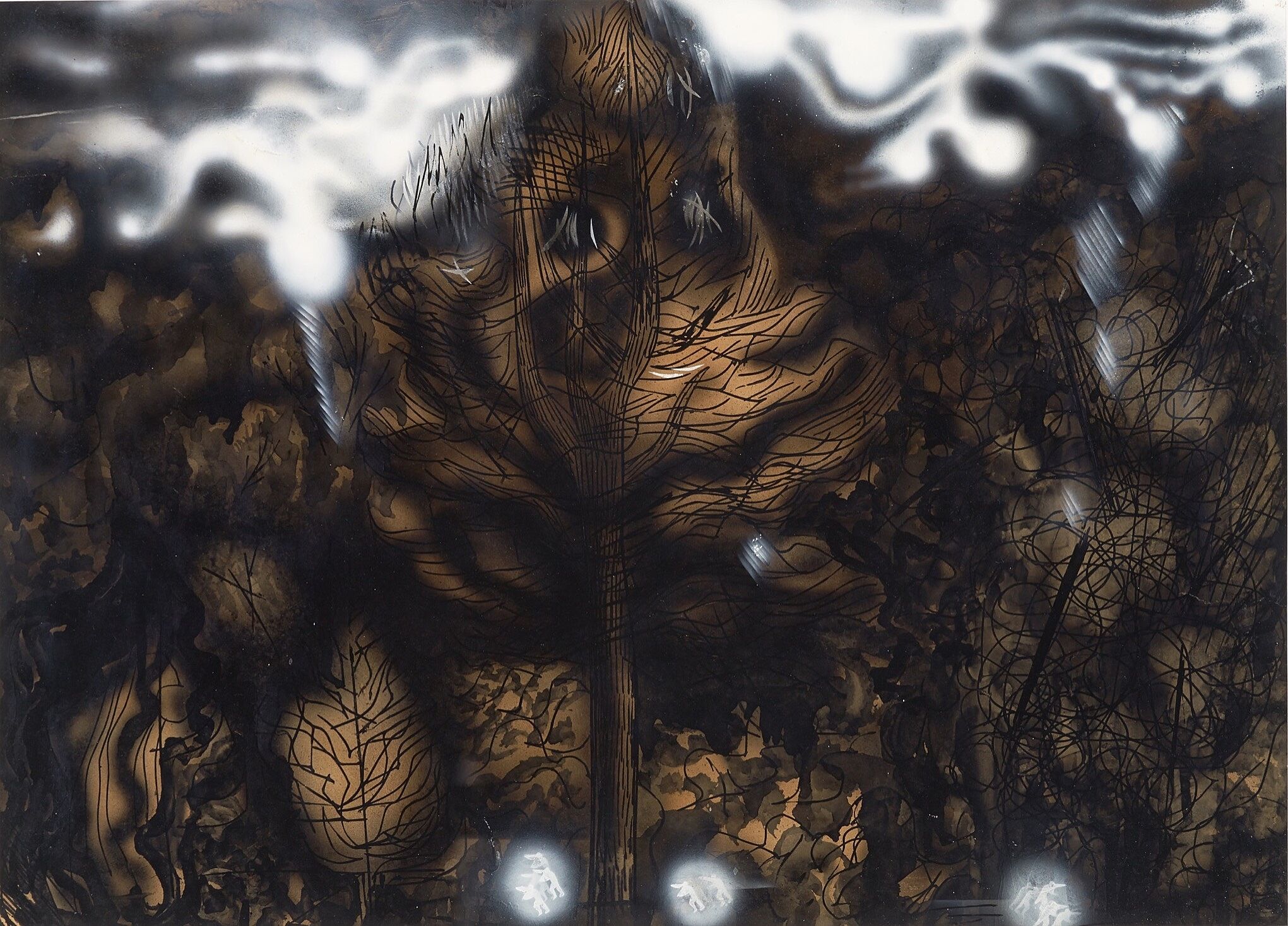Vida Americana: Mexican Muralists Remake American Art, 1925–1945 | Art & Artists
Feb 17, 2020–Jan 31, 2021
Vida Americana: Mexican Muralists Remake American Art, 1925–1945 | Art & Artists
Siqueiros and the Experimental Workshop
8
Siqueiros returned to the United States in 1934 and again in 1936, both times to New York. During the latter stay, he established the Experimental Workshop near Union Square as a laboratory for modern aesthetic techniques, keeping with his conviction that artists could not make revolutionary art using the techniques and materials of the past—that they “must live our marvelous dynamic age,” as he put it. Under Siqueiros’s direction, workshop members experimented with unorthodox materials and new ways of creating art, among them pouring and dripping paint onto canvas tacked to the floor. The workshop had a powerful effect on many artists, in particular Jackson Pollock, whose participation in the workshop introduced him to the possibilities of controlled accidents long before his adoption of the “drip technique” in 1947, which would make him one of the most renowned artists in postwar America.
Artists
- Charles Henry Alston
- Ramón Alva Guadarrama
- Lola Álvarez Bravo
- Luis Arenal
- Belle Baranceanu
- Will Barnet
- Carleton Beals
- Thomas Hart Benton
- Henry Bernstein
- Emil Bisttram
- Julius Bloch
- Lucienne Bloch
- Anita Brenner
- Jacob Burck
- Elizabeth Catlett
- Stuart Chase
- Howard Cook
- Miguel Covarrubias
- Aaron Douglas
- Sergei Eisenstein
- Jesús Escobedo
- Philip Evergood
- Seymour Fogel
- Ford Motor Company
- Hugo Gellert
- Xavier Gonzalez
- Marion Greenwood
- William Gropper
- Philip Guston
- Eitarō Ishigaki
- María Izquierdo
- Everett Gee Jackson
- Joe Jones
- Frida Kahlo
- Jacob Lawrence
- Harold Lehman
- Michael Lenson
- Mardonio Magaña
- Bendor Mark
- Fletcher Martin
- Leopoldo Méndez
- Carlos Mérida
- Edward Millman
- Tina Modotti
- Roberto Montenegro
- Emilio Gómez Muriel
- Hideo Benjamin Noda
- José Clemente Orozco
- Jackson Pollock
- Alfredo Ramos Martínez
- Anton Refregier
- Diego Rivera
- Ben Shahn
- Henrietta Shore
- Mitchell Siporin
- David Alfaro Siqueiros
- Harry Sternberg
- Paul Strand
- Thelma Johnson Streat
- Rufino Tamayo
- Edward Weston
- Charles White
- Hale Aspacio Woodruff

